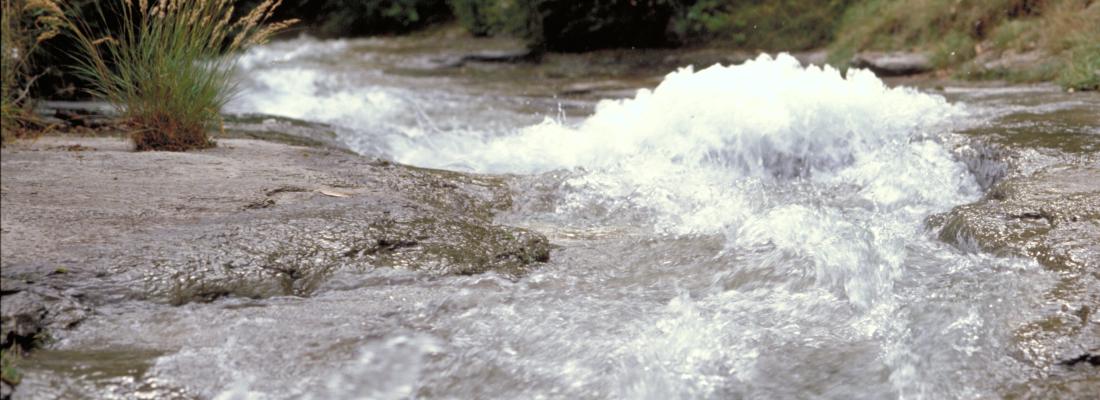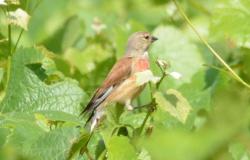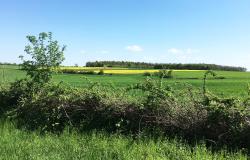Agroecology Reading time 5 min
Nature-based solutions 101
Published on 29 June 2022

Nature-based solutions (NBS) incorporate natural features and processes into regional projects to ensure their sustainable development while investing in the preservation and restoration of ecosystems.
What is a nature-based solution?
Nature-based solutions are defined as actions to protect, sustainably manage and restore natural or modified ecosystems that address societal challenges effectively and adaptively, simultaneously providing human well-being and biodiversity benefits (Source: UICN , 2016).
Preserving biodiversity is a major societal challenge. Nature-based solutions aim to reconcile that challenge with others, such as mitigating and fighting climate change, preventing natural risks, improving health, water supplies and socio-economic development.
The concept of nature-based solutions was addressed at the 2009 Conference of the Parties to the United Nations Framework Convention on Climate Change and was included in the Global Program of the International Union for Conservation of Nature (IUCN) in 2013. Following the COP21 in 2015, and the World Conservation Congress of 2016, NBSs became internationally recognised for their role in the achievement of sustainable development goals.
In France, the National Climate Change Adaptation Plan (PNACC 2) (2018-2022) and the Biodiversity Plan (2018) promote the use of NBSs.
Nature-based solutions take one of three forms, which can be implemented alone or jointly in regional action:
- the preservation of functional and ecologically sound ecosystems;
- the improved management of ecosystems for their sustainable use for human activities;
- the restoration of degraded ecosystems or the creation of new ones.
Similar to agroecology and ecological engineering, and less closely connected to biomimicry and bioinspiration, nature-based solutions place prime importance on the preservation and conservation of natural processes.
Agroecology puts ecology at the heart of agricultural system design to increase sustainability by using fewer inputs and fossil fuels, as well as to increase resilience to the various hazards to which systems are exposed.
In: Thierry Caquet, Chantal Gascuel, Michèle Tixier Boichard, Agroécologie : des recherches pour la transition des filières et des territoires [in French]. Editions Quae (Versailles, France), January 2020.

INRAE will take part in this congress, held from 3–11 September in Marseille, France. Visit us “Under the Biodiversity Dome” and at scientific forum events. View the complete programme here.
Examples of INRAE NBS projects
The concept is being explored by several INRAE teams, notably in the design and assessment of learning management approaches and diversification practices.
Nature-based solutions address societal challenges by building on the multiple ecosystem services provided by nature, while taking action to manage, conserve, and restore biodiversity.
INRAE is a partner in the Life Artisan project of the French Biodiversity Agency (OFB), aimed at increasing the resilience of territories to climate change by encouraging the use of nature-based solutions (EU 2020-2027). The project’s objectives focus on the challenges of adapting to climate change: demonstrating and promoting the potential of nature-based solutions (NBS); raising awareness and building skills among stakeholders; and supporting and expanding NBS projects throughout France (including the French overseas territories). With some 40 projects and ten pilot sites, it will create a multiple-scale framework for the roll-out of nature-based solutions.
NBSs can be applied in many ways in the field of water management, from protecting water quality to reducing natural hazards (floods and droughts) while preserving biodiversity.
Storm water runoff from urban roads is often highly contaminated with metallic and organic micropollutants and can contribute to the degradation of receiving aquatic environments. Located in the Bois de Boulogne park on the edge of Paris and based on an innovative prototype that combines green and greywater technologies, the Life Adsorb project, a high-performance pollution control system for runoff water that preserves biodiversity (EU 2018-2023), in which INRAE is a partner, is testing new ways of cleaning polluted rain water from the city’s high-traffic ring road. In the long term, Life Adsorb will play a role in implementing various directives on water, urban wastewater, flooding and bathing water.
Terrestrial environments can also benefit from NBSs designed to restore ecosystems and better manage them for sustainable use while yielding benefits for biodiversity.

Intensification in agriculture and the disappearance of semi-natural habitats at the edges of fields have led to a general decline in bird communities in agricultural landscapes in Europe. An international team coordinated by INRAE studied bird communities in vineyards in 12 wine-growing regions of France, Spain and Italy. Their results show that the diversity of bird communities is enhanced by the combination of organic viticulture, grass cover between the rows of vines and the diversity of habitats that make up the landscape. (Read more)

In agricultural landscapes, grasslands are important for the natural biological regulation of crop pests.
As hosts to the enemies of pests, these environments contribute to effective and sustainable biocontrol, a viable alternative to the use of pesticides. (Read more)
What’s next?
INRAE is now active in several NBS initiatives, and more research is needed to increase knowledge and know-how in this field.
Investigations to be carried out, a source of both disciplinary and interdisciplinary research, combine approaches in ecology, the geosciences, humanities and social sciences.
A balance must be struck between the proven benefits of nature-based solutions and their limitations. One example is the addition of plants to river bank rip rap, which, though ecologically valuable, must not jeopardise the structure’s robustness through excessive growth.
Cross-disciplinary, multi-stakeholder and innovative in the multiple benefits they offer, nature-based solutions can be applied to aquatic, terrestrial, AND interface environments. They are even more relevant today given the wide range of possibilities for their implementation.

The Handbook aims to provide decision-makers with a comprehensive NBS impact assessment framework, and a robust set of indicators and methodologies to assess impacts of nature-based solutions across 12 societal challenge areas. With the participation of INRAE scientists.
